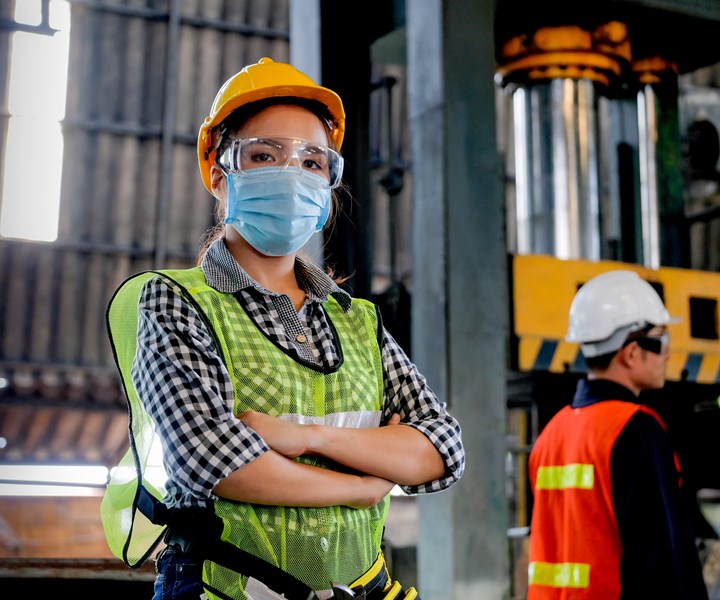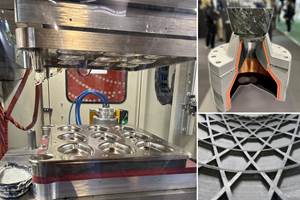Continuing the sustainable composites conversation
Once the coronavirus pandemic ends, and a new “normal” begins, what will the conversation around sustainable composites and advanced materials sound like?

As I write this I am, like much of the world, in week three of the “stay at home” or “shelter in place” mode necessitated by the COVID-19 coronavirus pandemic. And I, like everyone else, am asking the same questions. When will this end? When will life return to “normal”? The answers to these questions are elusive as we struggle to measure either exactly where we are, or in which direction we are heading. It reminds me of Heisenberg’s Uncertainty Principle, or the indeterminate state of existence represented by “Schrödinger’s​​​​​ cat” from my university quantum mechanics classes. Both concepts relate to the difficulties in measuring the exact state of matter.
I am convinced that the new term of the year, when 2020 ends, will be “social distancing.” If we don’t spend a lot of time in groups, as humans are wont to do, we stand a chance to reduce and possibly overcome the spread of the virus so that it struggles to spread and dies off. Implementation of social distancing has changed how we work, how we communicate and how we collaborate in the composites industry. Many of us are working from home, something I have done for the most part since 1993, so I am fairly comfortable doing it.
Up to a point, that is. I cannot recall a time in the last decade, and maybe longer, where I’ve spent three weeks straight in my home office, much less what I believe will be at least several more weeks. I’m a social creature and feel like I work and learn best in real person-to-person situations, necessitating travel, hotel stays, attendance at conferences and other physical events. The virtual world, while useful, is no substitute for seeing and touching composite materials, parts and assemblies. In the first month alone, I have had to cancel travel to multiple conferences and events, not to mention trips to corporate headquarters and partner sites. Sadly, 2020 will be the first year since 2000 that I won’t make the annual spring pilgrimage to Paris for the JEC World exhibition to see the latest in composites innovations.
I am optimistic that one outcome of the current crisis is a more balanced discussion regarding the benefits polymers convey to humans and the planet.
I’m not alone. I’ve had dozens of calls with contacts in the industry over these last three weeks and we are all in concert – we are getting some form of “cabin fever” and are looking forward to getting back to our nomadic normalcy. We’ll do our part to get through this, but we will be the first ones to hit the road as soon as the all-clear signal is given. I know there will be a lot of “catching up” to do during the busy fall conference season!
The current crisis is forcing some rethinking of past decisions. Last month, I wrote about the growing need for sustainable composites manufacture, a need which grew out of widespread bans on single-use plastics in numerous communities and some countries. Today, however, as a result of the pandemic and with concerns over hygiene, retailers are telling customers to leave their potentially unsanitary reusable shopping bags and containers at home, and reintroducing single-use plastic bags, utensils and beverage cups. While it is tempting to say, “we told you so,” we still need to make the effort to reduce plastic and composites waste, with a focus on a circular economy. I am optimistic that one outcome of the current crisis is a more balanced discussion between all parties regarding the benefits polymers in all forms convey to humans and the planet, and how best to address polymer disposal and re-use, rather than simply banning them outright.
Previous decisions about global sourcing and supply chains are being questioned, especially as they relate to personal protective equipment like masks and gowns, but also to sophisticated assemblies like respirators. We clearly live in a globally interdependent society, and innovation can come from anywhere, but I suspect governments will move to invest and encourage greater domestic sourcing of many critical technologies, including those that involve composite materials.
While the above are some of my personal observations, they no doubt resonate with many of you. While there is likely to be a new version of “normal,” I am confident we will emerge from this crisis with renewed enthusiasm to bring innovative composite solutions to market. I am also hopeful that by the time you read this, the worst of the pandemic will have passed, and we have some insight as to when we might resume face-to-face interactions. One thing is certain when we all meet again at industry events: Each of us will have a story to tell about this period. I hope our stories will all have happy endings.
Related Content
JEC World 2024 highlights: Thermoplastic composites, CMC and novel processes
CW senior technical editor Ginger Gardiner discusses some of the developments and demonstrators shown at the industry’s largest composites exhibition and conference.
Read MoreLow-cost, efficient CFRP anisogrid lattice structures
CIRA uses patented parallel winding, dry fiber, silicone tooling and resin infusion to cut labor for lightweight, heavily loaded space applications.
Read MoreDevelopment of a composite liquid hydrogen tank for commercial aircraft
Netherlands consortium advances cryogenic composites testing, tank designs and manufacturing including AFP, hybrid winding, welding of tank components and integrated SHM and H2 sensors for demonstrators in 2025.
Read MoreCombining multifunctional thermoplastic composites, additive manufacturing for next-gen airframe structures
The DOMMINIO project combines AFP with 3D printed gyroid cores, embedded SHM sensors and smart materials for induction-driven disassembly of parts at end of life.
Read MoreRead Next
Cutting 100 pounds, certification time for the X-59 nose cone
Swift Engineering used HyperX software to remove 100 pounds from 38-foot graphite/epoxy cored nose cone for X-59 supersonic aircraft.
Read MoreUltrasonic welding for in-space manufacturing of CFRTP
Agile Ultrasonics and NASA trial robotic-compatible carbon fiber-reinforced thermoplastic ultrasonic welding technology for space structures.
Read MoreNext-gen fan blades: Hybrid twin RTM, printed sensors, laser shock disassembly
MORPHO project demonstrates blade with 20% faster RTM cure cycle, uses AI-based monitoring for improved maintenance/life cycle management and proves laser shock disassembly for recycling.
Read More











